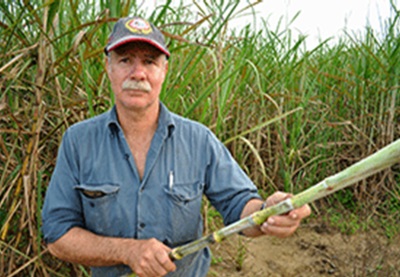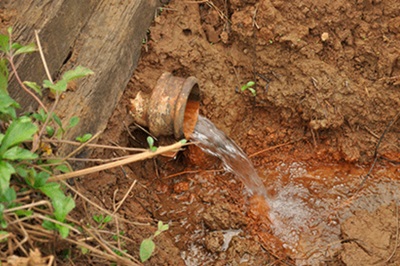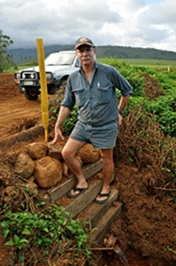Case Study
S-BMP-IDM-2013-002-01
At his cane farm in the foothills of magnificent Mount Bartle Frere, Ray Vicarioli has learnt to make a sustainable living from the land, while dealing with Mother Nature’s propensity to dish out weather in lavish extremes.
Ask the locals in the fertile country fringing the fast flowing Russell River, and they’ll tell you that when the clouds drop below the iconic ‘broken nose’ of Queensland’s tallest mountain that it’s about to rain.
Laughing, Ray adds: “and when the cloud’s above broken nose, rain is on the way.”
In a place where six metres of rain each year barely raises an eyebrow, it’s no surprise that drainage and soil hydrology can present great challenges, particularly on the more sloping paddocks approaching the mountainside.
On the Vicarioli’s 116 hectare property, a range of techniques have been employed to deal with the one raw material for which there is often a drastic oversupply – water.
Hilly paddocks have been contoured to reduce gradient and minimise water velocity. Sediment runoff has been limited by the application of silt traps.
Sophisticated sub-surface drainage systems have also been constructed to minimise nutrient volatilisation, maximise storage of nutrient in soils and largely eliminate chemical runoff into drains.
“If there’s any chemical in the water, it’s not going down into the creeks,” Mr Vicarioli said.
“With the seepage pipes, we’ll dig a trench probably a bit over a metre, or one point two metres deep, put 100 mm of sand on the bottom, put in a drainage pipe and fill to the top with more sand.
“Seepage coming through from the hills which normally just dams up along the headlands is removed through the sub-surface drain.”
While Mr Vicarioli consistently tests for nutrients in the creeks, the evidence of healthy waterways is readily visible.

Ray Vicarioli has implemented a range of techniques on his Cairns region farm to deal with an oversupply of water
Freshwater aquatic species that are sensitive to chemicals and require highly oxygenated water abound.
“The place is very alive, full of life, the little creek that runs through here is full of sooty grunter, mountain (jungle) perch and rainbow fish, eels, prawns, you name it,’’ Mr Vicarioli said.
“I have a meter which measures parts per million of nutrient, it goes down to about three hundred parts per million and I find no levels.’’
Over the years, Ray, wife Rosemary, son Ryan and daughter Lucy have also embraced Landcare initiatives and have taken an active involvement in riverbank restoration.
The other essential element of their philosophy is part of the creed for most growers in the wet tropics – make the most of every day, for tomorrow it will, almost surely, be raining.

While Mr Vicarioli consistently tests for nutrients in the creeks, the evidence of healthy waterways is readily visible

The Vicariolis have implemented sub-surface drainage systems to minimise nutrient volatilisation, maximise storage of nutrient in soils and largely eliminate chemical runoff into drains.
